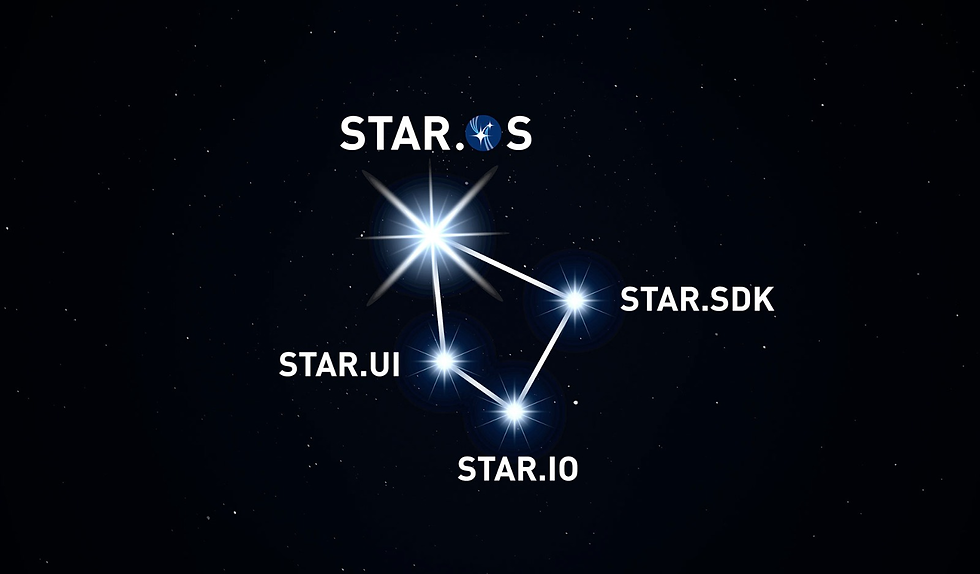Lockheed Martin's STAR.OS Platform Unlifies Military AI Systems for Rapid Deployment
- MM24 News Desk
- 3 hours ago
- 3 min read

Credit: lockheed Martin
Lockheed Martin has launched its STAR.OS solution, a breakthrough artificial intelligence integration platform that enables diverse AI systems to work together seamlessly for national security applications. The unified framework—already supporting Department of Defense missions including maritime threat detection and missile warning—solves longstanding interoperability challenges that have hampered military AI deployment.
The defense giant's innovation comes at a critical moment when military commanders face an overwhelming array of AI tools that often can't communicate with each other. STAR.OS creates a common language for artificial intelligence systems, allowing commanders to mix and match capabilities based on mission requirements rather than technical compatibility, according to company statements.
"With the STAR.OS solution, we're taking a major step forward in our ability to bring together different AI systems and make them work together seamlessly," said Mike Baylor, Lockheed Martin vice president and chief digital AI officer. "This will help us provide more effective and efficient solutions to our customers and ultimately help them make more informed decisions and stay ahead of emerging threats."
The platform's name represents its four core capabilities: Systems, Tactical applications, Autonomy/AI, and Rapid deployment. Rather than being a single product, it consists of three integrated components that address different aspects of the AI deployment pipeline. The STAR.SDK provides developers with tools to create and deploy AI services rapidly, essentially letting them focus on what they want to achieve rather than wrestling with technical integration barriers.
What makes this system particularly valuable for military applications is the STAR.IO component, reported Lockheed Martin in their announcement. This interoperability layer acts as a universal translator between different AI systems, ensuring they can communicate and share information regardless of their underlying architecture. For battlefield commanders, this means being able to incorporate intelligence from drone footage, satellite imagery, and signal intercepts into a single coherent picture.
The third component, STAR.UI, offers engineers and operators a real-time window into how AI is performing across systems. With built-in AI assistants, the interface helps humans understand the reasoning behind automated decisions—a crucial feature for maintaining appropriate human oversight in lethal decision-making loops.
Early implementations have already demonstrated tangible benefits, stated Lockheed Martin. During recent exercises, the platform successfully integrated multiple AI services into digital environments, dramatically reducing the time required to deploy new capabilities. At an internal AI Fight Club hackathon, developers used the framework to create integrated solutions for complex scenarios in hours rather than weeks.
The timing of this rollout aligns with growing Pentagon emphasis on Joint All-Domain Command and Control (JADC2) capabilities. As military operations increasingly span air, land, sea, space, and cyber domains, the need for AI systems that can operate across these boundaries becomes more urgent. Traditional approaches requiring custom integration for each new system simply can't keep pace with evolving threats.
Lockheed Martin's solution appears designed specifically to address this challenge. By providing a standardized framework, the company aims to accelerate the entire lifecycle of military AI deployment—from development and testing to fielding and updates. This could prove particularly valuable for enabling rapid software upgrades to existing hardware platforms without requiring extensive modifications.
The platform's availability to both federal and private sector customers suggests Lockheed Martin envisions applications beyond immediate military use. The same interoperability challenges exist in disaster response, border security, and critical infrastructure protection, where multiple agencies need to coordinate AI-driven decisions under time pressure.
For the Department of Defense, the potential benefits extend beyond technical integration. The platform could significantly reduce costs associated with maintaining multiple incompatible systems while improving the speed at which new AI capabilities reach warfighters. In scenarios where minutes matter—such as missile defense or anti-submarine warfare—the difference between integrated and siloed AI could be decisive.
As military AI continues to evolve, frameworks like STAR.OS may become the foundation for next-generation command and control systems. The platform represents a shift from viewing AI as standalone tools toward treating artificial intelligence as an integrated ecosystem where the whole becomes greater than the sum of its parts.



Comments